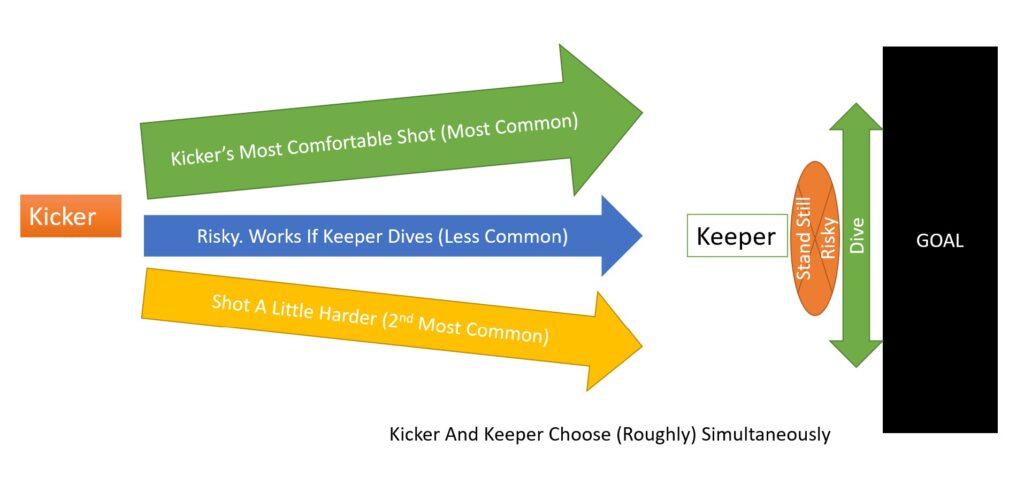As we move into the knockout stages of the World Cup [written in 2014] the specter of penalty kicks raises its ugly head. Penalty kicks are awarded as punishments during the game. They are also used to break ties at the end of the game. Penalty kicks are especially interesting for researchers. They represent an excellent chance to test whether predictions from game theory apply in the real world. What then about penalty kicks and mixed strategy?
Penalty Kicks and Mixed Strategy
Penalty kicks are mini-games within a game. These mini-games have a kicker and a goalie facing a zero-sum game. This means one of the players will win while the other will lose. It is zero-sum so they can’t both win or lose. Clearly being better at taking penalty kicks or saving them helps. The key theoretical insight is, at any given ability level, to win the mini-game it helps for the kicker to be unpredictable.
In general terms, the kicker needs to decide whether to kick left, right, or down the center. If they always make the same choice the goalie will know what is going to happen. This significantly increases the goalie’s chance of saving the penalty. If the goalie knows where the ball is going they can at least dive the right way.
Most players are right-footed. So for ease of explanation, we’ll assume our kicker is right-footed. The kicker will then likely be better at kicking to the left. Still, strategic considerations mean that even if the kicker is better at kicking to the left the kicker won’t always kick left. (Strategic in game theory means to do with interactions between people). A kicker who always plays to their strengths makes the goalie’s prediction task too easy. Thus, the kicker mixes up what they do. Sometimes the kicker makes shots that are a little harder to do well. This is simply to confuse the goalie’s prediction of what they will do. This is the essence of a mixed strategy. (The classic mixed strategy game is Rock, Paper, Scissors where unpredictability is the key to success).

Mixed Strategy In Life
I use the idea of mixed strategies in my research so it is great to see attempts to “test mixed-strategy behavior using data generated outside of a controlled experiment.” (Chiappori, Levitt, and Groseclose. 2002, page 1150). Their work provides important evidence that mixed strategies matter in a real-world environment.
If you see a player from your team taking a penalty in the world cup they are probably intuitively using a sophisticated strategy based upon game theory. Or they might just be panicking given billions of people are watching. Either way, they are likely to be quite unpredictable.
For more on decisions in markets see here.
Read: P.A. Chiappori, S, Levitt and T .Groseclose (2002) Testing Mixed-Strategy Equilibria When Players Are Heterogenous: The Case of Penalty Kicks in Soccer, The American Economic Review, Volume 92, Number 4, September, pages 1138-1151.
